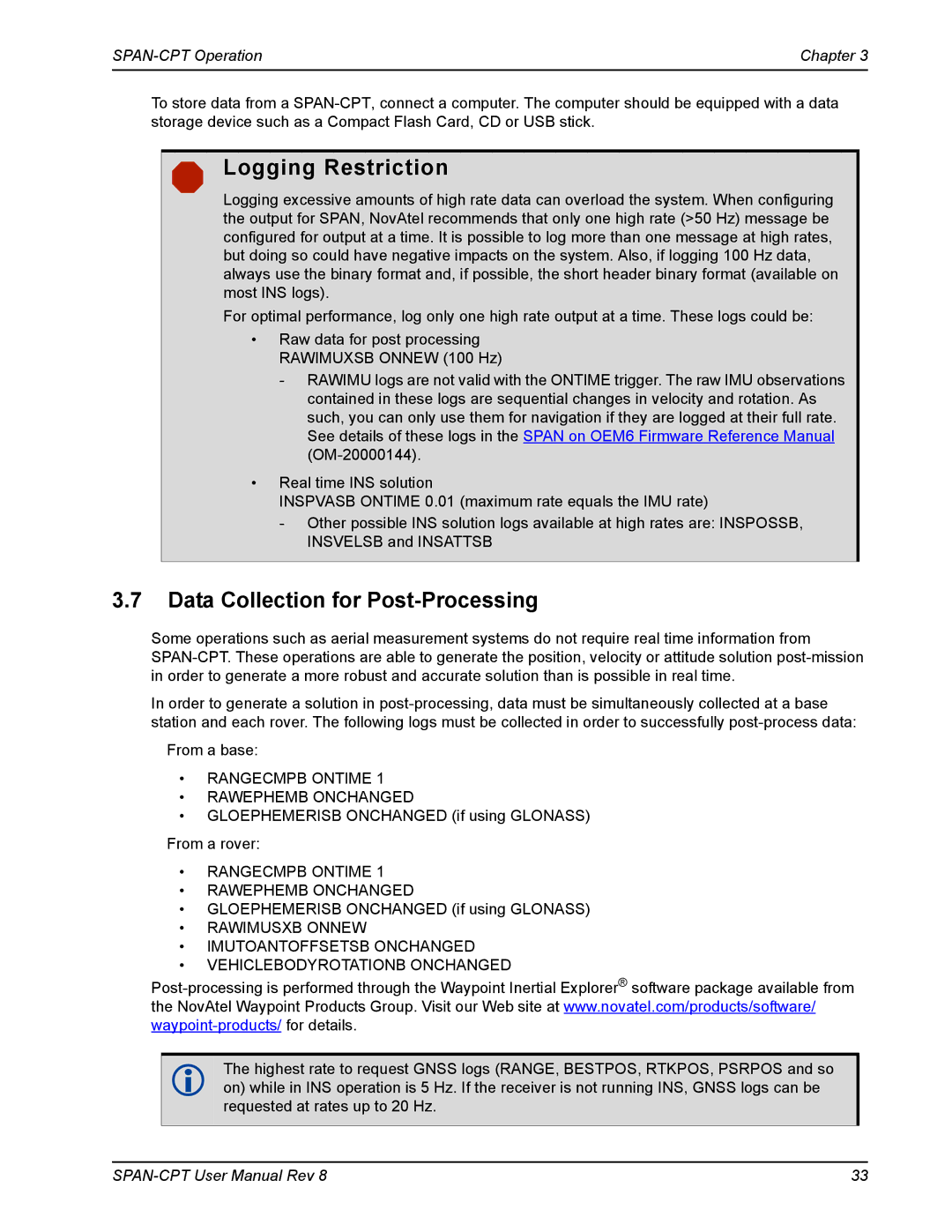
Chapter 3 | |
|
|
To store data from a
Logging Restriction
Logging excessive amounts of high rate data can overload the system. When configuring the output for SPAN, NovAtel recommends that only one high rate (>50 Hz) message be configured for output at a time. It is possible to log more than one message at high rates, but doing so could have negative impacts on the system. Also, if logging 100 Hz data, always use the binary format and, if possible, the short header binary format (available on most INS logs).
For optimal performance, log only one high rate output at a time. These logs could be:
•Raw data for post processing RAWIMUXSB ONNEW (100 Hz)
-RAWIMU logs are not valid with the ONTIME trigger. The raw IMU observations contained in these logs are sequential changes in velocity and rotation. As such, you can only use them for navigation if they are logged at their full rate. See details of these logs in the SPAN on OEM6 Firmware Reference Manual
•Real time INS solution
INSPVASB ONTIME 0.01 (maximum rate equals the IMU rate)
-Other possible INS solution logs available at high rates are: INSPOSSB, INSVELSB and INSATTSB
3.7Data Collection for Post-Processing
Some operations such as aerial measurement systems do not require real time information from
In order to generate a solution in
From a base:
•RANGECMPB ONTIME 1
•RAWEPHEMB ONCHANGED
•GLOEPHEMERISB ONCHANGED (if using GLONASS)
From a rover:
•RANGECMPB ONTIME 1
•RAWEPHEMB ONCHANGED
•GLOEPHEMERISB ONCHANGED (if using GLONASS)
•RAWIMUSXB ONNEW
•IMUTOANTOFFSETSB ONCHANGED
•VEHICLEBODYROTATIONB ONCHANGED
The highest rate to request GNSS logs (RANGE, BESTPOS, RTKPOS, PSRPOS and so on) while in INS operation is 5 Hz. If the receiver is not running INS, GNSS logs can be requested at rates up to 20 Hz.
33 |
